Tea in Central Asia: Basic Information
Pronunciation
Alternative Name(s)
Drink Type
Mealtime
Popular Variations
- Black Tea
- Green Tea
- Milk Tea
Tea in Central Asia: Ingredients and Preparation
Main Ingredients
Main Preparing Method
Preparation Process
Tea in Central Asia: A Deep Dive
Cultural Significance
Taste
Texture
Aroma
Color
Serving Style
Serving Temperature
Accompaniment
- Bread
- Snacks: Dried yogurt, cheese, dried fruits, nuts, etc.
- Pastries
- Meat dishes
Occasions
Calories
Popularity
Popular Similar Drinks
Popular Dining Area
Tea in Central Asia encompasses various types of tea consumed in Kazakhstan, Kyrgyzstan, Tajikistan, Turkmenistan, and Uzbekistan, with immense cultural significance in these countries.
While originating in China, Central Asian tea has acquired unique characteristics and customs during its long history.
For example, kaitar (or kaytar) is an art of brewing tea unique to Central Asia. Another characteristic of local teal culture is to enjoy tea in a piala (piyāla), a traditional and usually ornately designed drinking cup.
Tea is a powerful symbol of hospitality in Central Asia since people always serve tea to visiting guests. This beverage is also influential in local cuisine, served with various traditional dishes.
There are three main types of tea in Central Asia: green tea, black tea, and milk tea. While tea is popular year-round, some people prefer certain tea types in different seasons.
To discover the development of tea in Central Asia, popular tea types in the region, and fascinating traits of the local tea culture and drinking customs, let’s join this reading with me.
I will also delve into well-liked Central Asian dishes to accompany tea and compare tea in Central Asia and China.
Finally, you will learn the advantages and disadvantages of Central Asian tea and the answers to many commonly asked questions about this drink.
Before you start this journey, check out the interactive filter to explore more interesting beverage options and their facts.
Key Points
Tea in Central Asia Images
How Did Tea Become Popular in Central Asia?
Tea originated in China and was spread to Central Asia by caravans traveling along the Silk Road.
Central Asians acquired a taste for tea during the Tang dynasty (618–907 CE). However, archaeological evidence suggests an earlier encounter with tea.
This era also coincided with the region’s embrace of Islam, which discouraged alcohol consumption. Muslim teachings might have made tea more appealing to the locals.
In the 19th and 20th centuries, Russian culinary influence grew in Central Asia, considerably changing how locals enjoyed tea.
Many Russian tea customs gained popularity in Central Asia, such as brewing tea in samovars and serving black tea with milk, lemon slices, spices (cardamom or fennel), and sugar.
At this time, tea consumption increased significantly. This beverage eventually surpassed traditional Central Asian drinks, such as kumis and chal, in terms of popularity.
Today, green tea is considered a national drink in Tajikistan and Uzbekistan, while the people of Kazakhstan, Turkmenistan, and Kyrgyzstan consume huge quantities of tea annually.
These countries consume several different types of tea; read on to discover more about them.
What Are the Tea Types in Central Asia?
In Central Asia, each country adores a different variety of tea. Here are some top choices for tea in the Central Asian region:
| Country | Preferred Tea Types | Additional Details |
|---|---|---|
| Kazakhstan | Black tea | Black tea from India and Sri Lanka became popular in the 1970s, replacing traditional green tea. Tea with red color is known as kyzyl shai due to its strong red liquor. Enjoyed without milk or sugar Wooden spoons and tea storage boxes (shai shandyk) are common in homes. |
| Uzbekistan | Green tea (common) and black tea | Green tea, known as kuk choy, is the national drink of Uzbekistan. Consumed without milk and sugar. Integral to every meal and drunk 5-6 times a day. Black tea (kora choy) is also consumed. |
| Turkmenistan | Green tea (year-round) and black tea (autumn/winter) | Green tea, called gok chai, is enjoyed throughout the year. Black tea, known as gara, is popular in autumn and winter. |
| Tajikistan | Green tea (main), black tea, and milk tea | Green tea is a favorite choice. Black tea is preferred in winter. Milk tea (shirchoy), made with butter and salt, is also consumed. |
| Kyrgyzstan | Black tea and green tea (equally popular) | Black tea arrived with Russian influences. Both black and green teas are popular, reflecting a blend of Russian and traditional Chinese influences. |
After knowing about the various tea varieties in Central Asia, uncover the tea culture that locals often have to enjoy these herbal drinks properly.
What Is the Tea Culture in Central Asia?
Central Asian countries share many similarities when it comes to tea culture. Here is a breakdown of the core values behind the region’s fascination with tea.
Social Significance
Tea is the default beverage for many social occasions and settings in Central Asia, from friendly gatherings to weddings and festivals. People exchange stories and form connections over steaming hot cups of tea.
A compulsory act of hospitality in local culture is offering guests tea. Declining such an offer can be seen as impolite.
Cultural Distinctiveness
Unlike elaborate tea ceremonies in China and Japan, drinking tea is a relatively more relaxed affair in Central Asia, with more emphasis on the guest’s enjoyment than the ceremony’s sophistication.
Nevertheless, Central Asians have developed certain brewing and serving techniques that make their tea culture remarkable.
An example is kaitar, the art of pouring tea back and forth between the bowl and the teapot to achieve the proper taste.
Meal Enjoyment
Meals in Central Asia usually have tea as an accompanying drink. In addition, a large feast or a meal attended by guests can be preceded by a light meal of tea and various snacks.
Hierarchy and Hospitality in Serving
In Central Asia, the order of serving tea conveys respect for the hierarchy in traditional cultures. The head of the family or the elders are usually served first.
But local tea culture also shows a strong sense of hospitality, as guests are served before others.
Teahouses
Teahouses, known as chaikhanas, are popular public venues for Central Asian people to meet, relax, and drink tea.
The floor of traditional Central Asian teahouses is usually carpeted or covered with felt, so guests have to take off their shoes before entering.
At the center of a room is a low table that can be covered with a tablecloth (dastarkhan) and surrounded by beautifully decorated pillows or mattresses. Guests can sit cross-legged or half-lie on the floor.
Tea and accompanying snacks are served on the table. Some teahouses also have takhta, an ottoman-like couch, or cushioned seat for extra comfort.
You’ve just explored the basics of Central Asian tea culture, so how about delving into specific tea-drinking customs?
What Are Popular Tea Drinking Customs in Central Asia?
Interestingly, Central Asia shares similar customs for serving tea, though some countries have different preferences in terms of tea options:
Small Portions
Tea is typically served in small portions, particularly in a piala. A half-filled cup is a sign of respect and an invitation for extended conversation, while a filled one can mean the opposite.
In practical terms, offering tea in small amounts makes it cool down faster, so the guest won’t get burned from drinking scalding hot tea.
Brewing Rituals
The tea is often brewed with care, involving multiple pourings back and forth to enhance the flavor. This ritual is part of the tea’s preparation and serving process.
When serving, the host always prepares more piala cups than the number of guests. The extra bowl is needed for the kaitar ritual (including three stages of loy – the first pouring, moy – the second pouring, and choy – the third pouring), involving pouring the tea back and forth.
Meal Tradition
It’s common to drink tea before or after meals. Guests should remain seated until everyone has finished their tea.
Indicating Satisfaction
Guests signal that they have had enough tea by placing their hand over the cup or bowl, a gesture of gratitude and satisfaction.
Tea Pouring
For serving, either the host or the youngest person in the house will pour the tea into the piala cups. As for women’s gatherings, the hostess or her daughter-in-law serves the tea, while in men’s gatherings, the host takes on this role.
Drinking Season
During “chilla,” the hottest 40-day period in mid-summer with temperatures above 40°C (104°F), it is customary to drink copious amounts of green tea and avoid direct sunlight for health and cooling purposes.
Once you’ve wrapped your mind around the common customs for enjoying tea in Central Asia, explore each country’s different rules for enjoying this beverage.
What Are the Tea-drinking Customs in Each Central Asian Country?
These are the customs tailored to each country of Central Asia when locals enjoy tea:
Tea is served in pialas, typically one-third full.
The brewing process involves warming the teapot and a multi-stage pouring technique known as kaitar.
Tea is served in ornate pialas, and traditional seating is on mats or cushioned benches.
Guests need to place their cups upside-down to signal the end of tea drinking.
Women typically serve and pour tea into piala cups.
The hostess may pour the first few cups back into the pot.
Tea is often mixed with milk or cream and sometimes flavored with sugar, lemon juice, butter, or spices.
Tea is poured with a small amount for guests as a sign of respect.
Incoming guests need to go through a syi-ayak ritual of washing their hands before having black tea.
Tea is brewed using the “gaytarma” method by aksakals, involving a unique process of steeping and re-steeping the tea.
The bride and groom drink tea from the same cup in a traditional wedding.
Later on, let’s uncover the common culinary options that go well with Central Asian tea.
What Are Popular Central Asian Dishes to Serve With Tea?
It’s a common thing to have tea with various Central Asia dishes. However, each country offers a completely different combo to create unique flavors:
Bread and Pastries
In Kazakhstan and Kyrgyzstan, baursak is a fried bread often served with tea, while the population of Uzbekistan prefers pairing the drink with a samsa pastry with filling.
As for Central Asia, naan is a more popular choice in countries within the region for serving with tea.
Sweets and Confectioneries
Halva, a treat made using sunflower seeds or nuts, is often paired with tea to tone down the sweetness.
In Kazakhstan and Kyrgyzstan, chak-chak is a sweet made by deep-frying dough and honey, making it ideal for accompanying tea.
Dried Fruits and Nuts
Assorted dried fruits (apricots, raisins, figs) and nuts (almonds, walnuts) are popular with tea in Central Asia.
Dairy Products
Dried salted cheese like kurt is a common serving along with tea. Additionally, options like milk and butter are often included directly into the drink for a milky and creamy touch.
Savory Dishes
Plov (pilaf), a rice dish with meat and vegetables, is often enjoyed with tea after eating a meal in Uzbekistan. Alternatively, Kazakhstan and Kyrgyzstan usually have tea with mani dumplings.
In case you’re looking to know more about tea in Central Asia, take a look at how this beverage stands against ones of Chinese origin.
What Are The Differences Between Tea in Central Asia and China?
Tea in Central Asia stands out from its Chinese version in the following 6 aspects: history, tea types, how to serve, tea culture, tea drinking customs, and traditional dishes to serve with tea.
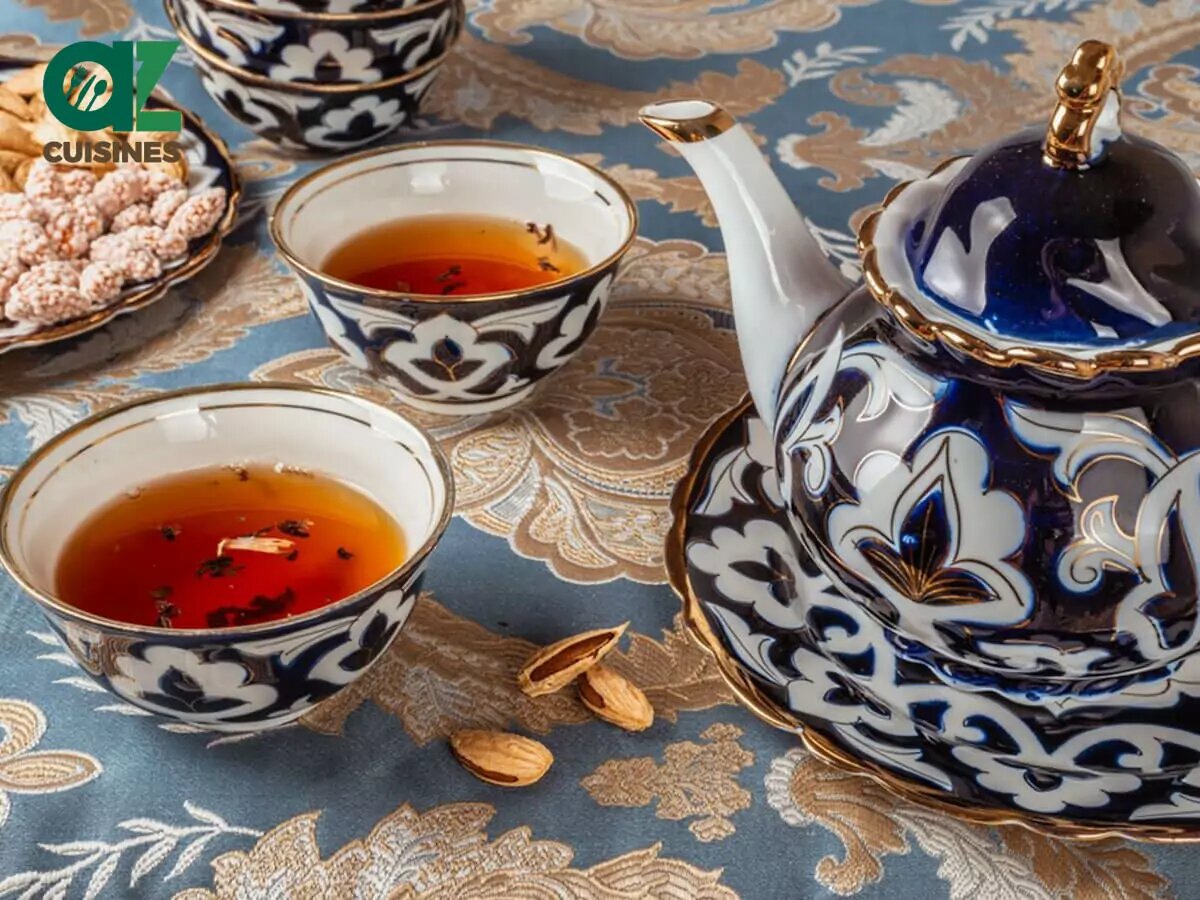
Central Asia
History:
Brought to Central Asia from China via the Silk Road trade.
Popularized between the 7th and 10th centuries.
Influenced by Russian cuisine in the 19th and 20th centuries.
Tea Types:
Predominantly black tea and green tea
How to Serve:
Served hot, often continuously refilled.
Can be blended with sugar, spices, or milk.
Tea Culture:
Symbol of hospitality.
Less emphasis on ceremony, more on hospitality.
Less formalized.
Drinking Customs:
Served in large bowls or cups.
Daily social activity.
Different rules depending on the country.
Traditional Accompaniments:
Bread, jam, dried yogurt, nuts, dried fruits, sweet and savory pastries, meat dishes.
Notable dishes: tandyr nan, samsa, beshbarmak, manti, pilaf, baursak, dried apricots, halva

China
History:
Allegedly discovered in the 3rd millennium BCE.
Established as a drink in the 1st millennium BCE.
Evolved through various Chinese dynasties.
Tea Types:
Numerous varieties: green, black, white, oolong, pu-erh, etc.
How to Serve:
Served hot and typically consumed pure without additives.
Tea Culture:
An integral part of social fabric and hospitality
Tea ceremonies reflect philosophy and aesthetics.
Tea art emphasizes water quality, temperature, and brewing time.
Drinking Customs:
Served in small cups or clay cups.
Ranges from casual to ceremonial.
Traditional Accompaniments:
Dim sum (Cantonese breakfast dishes), pastries, snacks, seafood, lightly seasoned main dishes.
Notable dishes: mooncakes, turnip cakes, spring rolls, egg tarts, sesame seed balls
After going through this overview, why don’t you take a look at the benefits and possible shortcomings of consuming tea in Central Asia?
Pros and Cons of Drinking Tea in Central Asia
These are the ideas to consider before drinking Central Asian tea:
Pros
Cons
Find out more intriguing ideas relating to tea in Central Asia through fascinating inquiries from other readers.


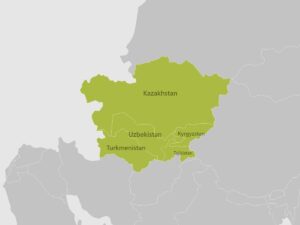

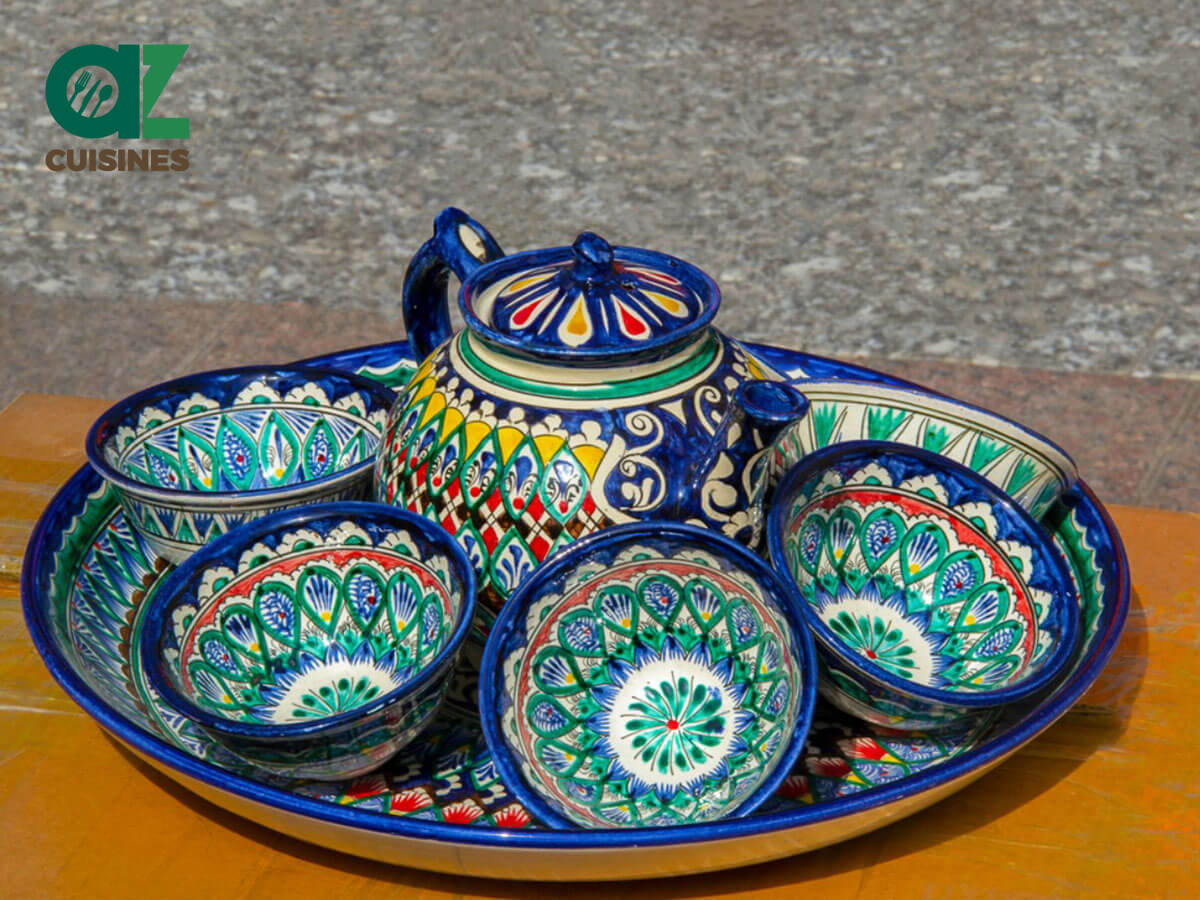

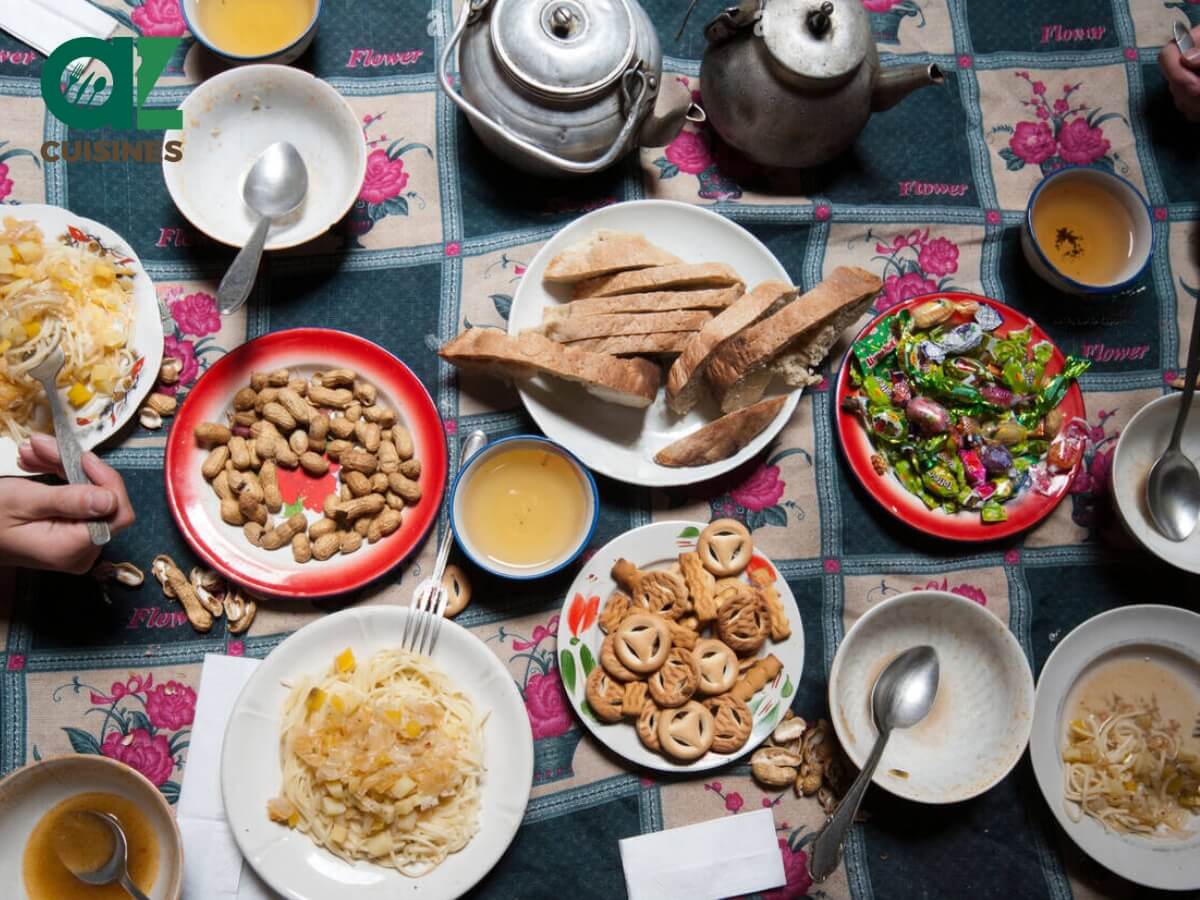





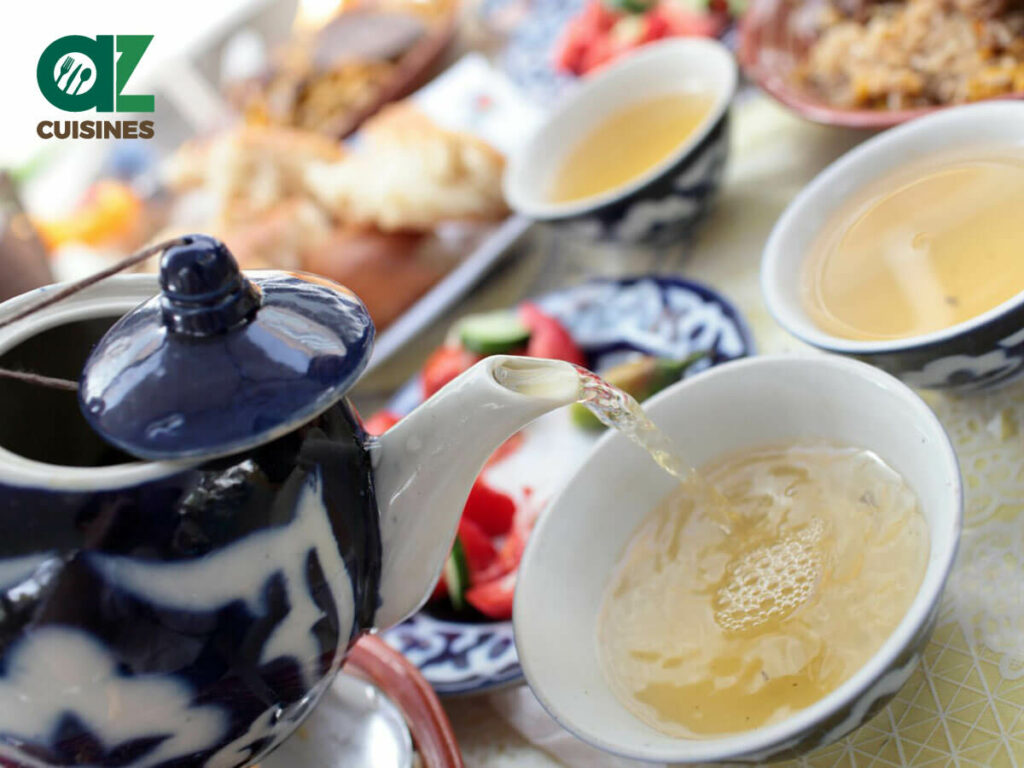
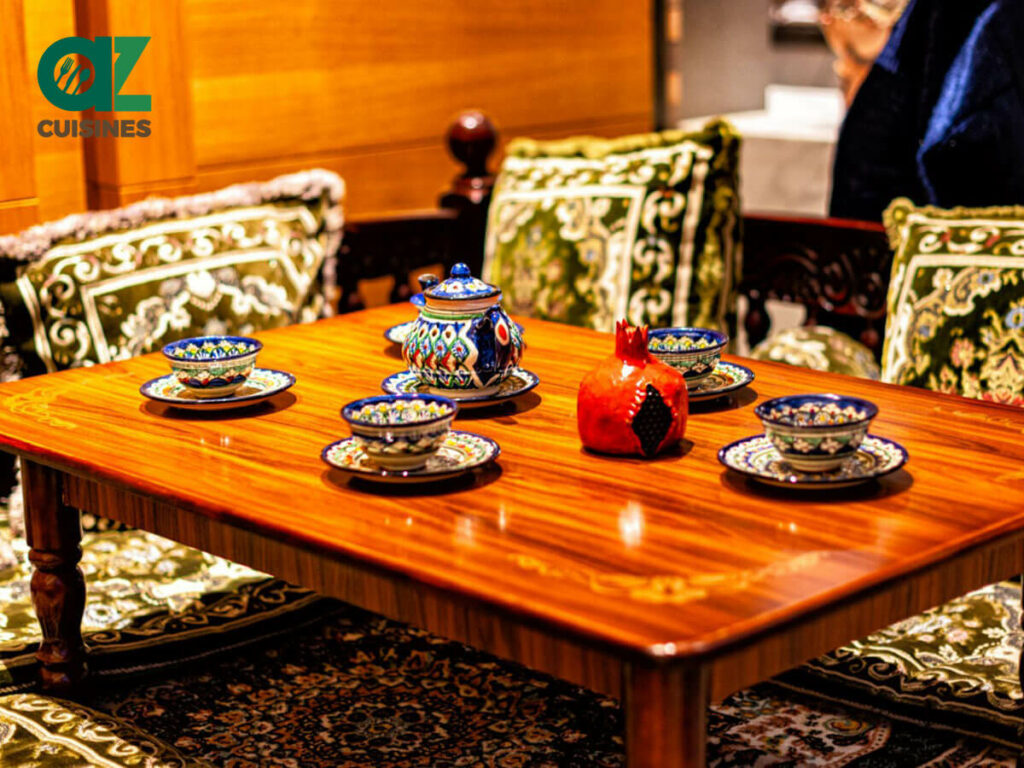
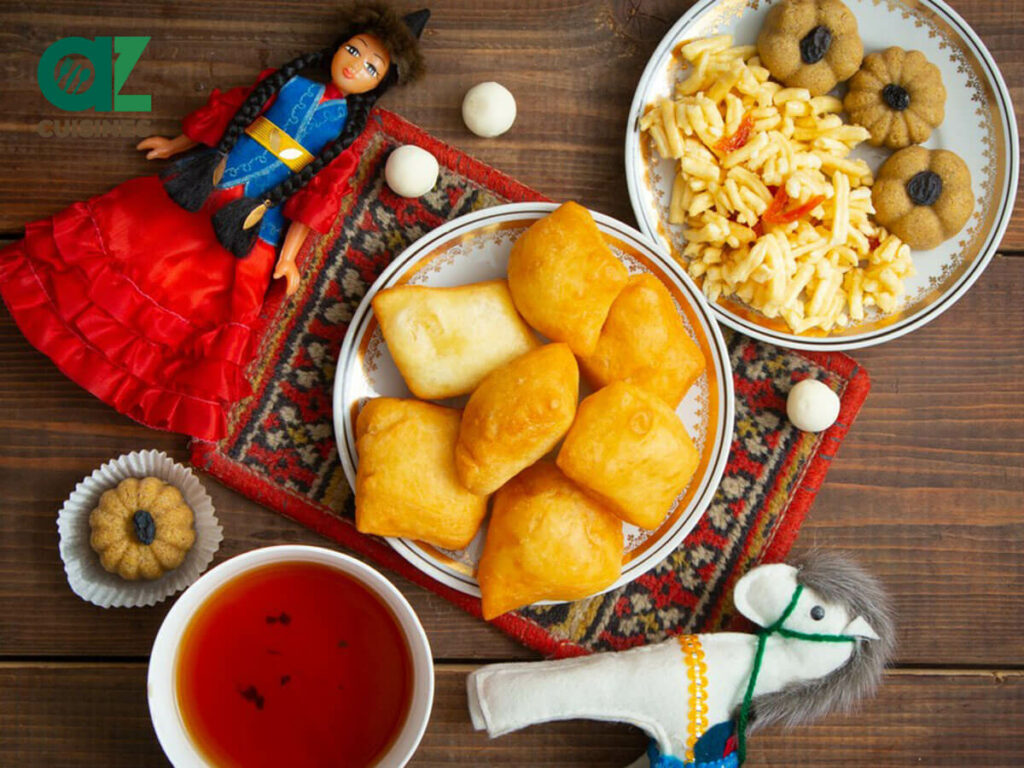
Adam Sam
Senior Food and Drink Editor
Expertise
Food Writer & Recipe Developer, Recipe Tester, Bartender, Cooking-video Maker, Editor In Chief
Education
Adam Sam, an experienced food writer and recipe developer, is passionate about blending diverse culinary traditions, national dishes, and innovative beverages, showcasing his proficiency in both traditional and modern recipe testing.
As the Editor-in-Chief, he elevates culinary content from street food to fine dining, focusing on Western cuisine and types of drinks at azcuisines.com, and is professional in creating engaging cooking videos that simplify complex dishes and ingredients.
His passion for food is evident in his writing, where he uniquely merges various cultures, traditions, and contemporary trends, skillfully combining classic recipes with modern cooking methods.